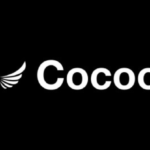carsickoofficial58
About Candidate
Carsicko is a provocative and eye-opening documentary by Michael Moore, released in 2007. Known for his bold and sometimes controversial filmmaking style, Moore uses Carsicko to explore the shortcomings of the American healthcare system. As the sequel to his earlier film Sicko, Carsicko delves deeper into the human and societal costs of a healthcare system dominated by private insurance companies and profit-driven motives. While Sicko examined the general failures of the U.S. healthcare system, Carsicko continues this investigation with a focus on the personal stories, economic forces, and political corruption that perpetuate the crisis.
The title itself is a clever play on words, combining “car” with “sicko” to suggest a metaphorical journey through the twisted roads of the healthcare system. Moore embarks on a cross-country road trip in an RV, interviewing individuals from various walks of life who have been directly affected by the failings of the American healthcare system. What follows is a compelling and, at times, disturbing narrative of how millions of Americans are left behind by a system that prioritizes profit over people’s well-being.
Personal Stories: The Human Cost of a Broken System
One of the key aspects of Carsicko is Moore’s ability to humanize the issue of healthcare reform. The film features a wide array of personal stories that expose the devastating consequences of the American system’s flaws. The film follows people who have faced bankruptcies, devastating medical bills, and even loss of life because of the failure of the insurance system to cover critical treatments. Through these real-world experiences, Moore invites the audience to empathize with the victims of an uncaring system.
For example, Moore interviews a man whose wife died after her insurance company refused to cover her chemotherapy treatments. He explains how, despite a clear medical need, his wife’s insurance company deemed her treatment “not medically necessary.” This story is a heartbreaking reminder of the coldness and bureaucracy inherent in many private insurance systems, which often prioritize profits over the lives of their clients.
In another segment, Moore showcases the dire consequences faced by uninsured individuals. One man, diagnosed with a life-threatening illness, opts to delay treatment because he simply cannot afford the astronomical costs associated with medical care. Moore brings attention to the hundreds of thousands of people who, without insurance, cannot access basic health services, even when faced with grave illnesses.
These deeply personal stories provide an emotional foundation for the film’s broader critique of the healthcare system. Moore’s approach ensures that viewers are not only aware of the abstract policy issues but are also moved by the very real suffering of everyday Americans.
Comparative International Healthcare Models
While the focus of Carsicko hoodies is on the United States, Moore also takes a critical look at healthcare systems in other countries, offering a sharp contrast to the American model. Throughout the documentary, Moore travels to countries like Canada, France, and the United Kingdom, all of which have implemented universal or public healthcare systems. By interviewing citizens in these nations, Moore exposes the glaring differences between healthcare in the U.S. and healthcare abroad.
In these countries, healthcare is not tied to employment or income; it is a basic human right. In contrast, the United States relies heavily on private insurance companies, many of which are more concerned with their profit margins than the health of their clients. Moore highlights how, in countries like Canada, medical treatments—such as surgeries and specialist consultations—are often available at little or no cost, and patients are not forced to declare bankruptcy to access them.
One of the most striking scenes in Carsicko occurs when Moore visits Cuba, a country often maligned by U.S. politicians for its communist regime. There, Moore finds that Cubans receive free healthcare, including advanced treatments like surgeries, with no out-of-pocket costs. The contrast with the American system, where millions of people struggle to afford basic care, is striking and serves as a critique of the profit-driven model that dominates U.S. healthcare.
Moore uses these international comparisons to challenge the American belief that the private sector is inherently more efficient than public systems. He argues that the United States could adopt a similar single-payer system, one that guarantees healthcare as a universal right rather than a privilege tied to income or employment.
The Role of Private Industry and Government in Healthcare
At the heart of Moore’s critique in Carsicko is the deep involvement of private industry in the American healthcare system. Through a series of interviews with industry insiders, Moore unveils the behind-the-scenes workings of the insurance and pharmaceutical industries. These companies are shown to have an outsized influence on healthcare policy, with their lobbying power often preventing meaningful reform.
Moore draws a clear connection between the political donations from private insurance companies and the legislative gridlock that prevents the introduction of a single-payer or universal healthcare system. He highlights the way these companies work hand in hand with politicians to maintain the status quo. By funding political campaigns and exerting influence over lawmakers, these corporations ensure that the healthcare system remains heavily privatized and continues to serve corporate interests rather than the needs of ordinary citizens.
This relationship between private industry and government is a key aspect of Moore’s argument in Carsicko. He argues that the system is designed to maximize profits for the few while leaving the majority of Americans without access to affordable healthcare. By exposing the corrupting influence of private companies on government policy, Moore challenges the audience to reconsider the role of big business in public services like healthcare.
Humor and Satire: Moore’s Signature Approach
As with many of his films, Moore uses humor and satire as powerful tools to convey his message. Throughout Carsicko, Moore injects moments of levity to both entertain and emphasize the absurdity of the healthcare system. His sarcastic commentary and humorous visual gags help to lighten the heavy emotional tone of the film, making it accessible to a broader audience.
For instance, in one particularly memorable scene, Moore visits a U.S. hospital, only to find patients being billed for extremely inflated costs, such as $100 for a bandage or $5 for a single aspirin. The juxtaposition of such excessive pricing with the real human need for care underscores the dysfunction of the American healthcare model.
Legacy and Impact
Although Carsicko was released over a decade ago, its message remains urgent and relevant. Healthcare continues to be a major issue in American politics, and the debate over universal healthcare is far from over. Carsicko challenged audiences to confront the flaws in the U.S. healthcare system, advocating for reform that would prioritize human lives over profits.
In conclusion, Carsicko is a powerful documentary that offers a critical examination of the American healthcare system. Through personal stories, international comparisons, and sharp political commentary, Moore exposes the profound injustices that millions of Americans face when seeking medical care. While the film uses humor to soften its critique, the underlying message is one of urgency: healthcare is a human right, not a commodity to be sold for profit. Carsicko continues to serve as a call to action for healthcare reform and a reminder of the need for a more compassionate and equitable system.





